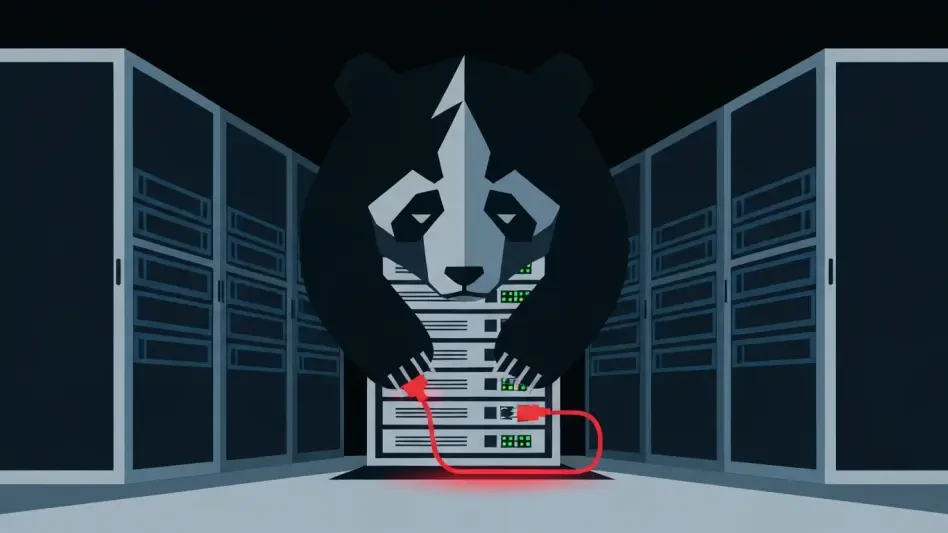In an era where cyber threats loom large over essential services, a striking reality emerges: critical infrastructure sectors like utilities, manufacturing, and transportation are increasingly vulnerable to attacks targeting operational technology (OT) systems, which manage physical processes through devices and sensors. These systems are the backbone of industries that keep societies functioning, yet they often remain underprotected. Last month, the U.S. Cybersecurity and Infrastructure Security Agency (CISA), in collaboration with the FBI, NSA, EPA, and cybersecurity authorities from nations such as Australia, Canada, Germany, the Netherlands, and New Zealand, issued pivotal guidance on OT asset inventory. This initiative aims to fortify critical infrastructure by helping organizations catalog and prioritize their OT assets, enhancing both security and incident response capabilities. As cyber incident reporting mandates loom under U.S. and EU regulations, this guidance marks a critical step toward safeguarding vital systems from malicious disruptions.
1. Understanding the Guidance and Its Urgency
The newly released guidance from CISA and international partners builds on existing Cybersecurity Performance Goals (CPGs), specifically emphasizing the importance of maintaining an up-to-date inventory of both IT and OT assets. OT systems, including industrial control systems and automation equipment, are integral to critical infrastructure but are prime targets for adversaries seeking to exploit weaknesses. Common vulnerabilities include outdated software, lax authentication, inadequate network segmentation, insecure protocols, and unprotected remote access points. These gaps can lead to catastrophic disruptions if exploited. The guidance provides a framework for organizations to systematically identify and catalog their OT assets, ensuring better visibility into potential risks. By doing so, entities can preemptively address vulnerabilities and prepare for rapid response in the event of an attack, a necessity as cyber threats grow more sophisticated and frequent.
This urgency is amplified by upcoming regulatory requirements in the U.S. under the Cyber Incident Reporting for Critical Infrastructure Act (CIRCIA) and in the EU under the revised Network and Information Systems Directive (NIS2 Directive). These laws will mandate reporting of significant cyber incidents, including those affecting OT, even if no data is compromised. The guidance serves as a preparatory tool for compliance, helping organizations develop the necessary visibility to assess and report incidents accurately. Beyond compliance, it underscores a broader push for cybersecurity governance, urging senior leadership to prioritize OT security. Sample taxonomies for sectors like Oil and Gas, Electricity, and Water and Wastewater are included to assist in tailoring asset inventories. This collaborative international effort signals a unified stance on protecting critical infrastructure from escalating cyber risks.
2. Establishing Scope and Goals for Inventory Development
The first critical step in creating an OT asset inventory, as outlined in the guidance, is to define the scope and objectives of the program. This involves establishing governance structures to oversee asset management and identifying specific offices or roles responsible for building and maintaining the inventory. Clear delineation of duties for collecting and validating data is essential to ensure accuracy and accountability. Organizations must also determine the boundaries of the initiative, whether it covers specific facilities, zones, or systems, and set a realistic timeline for development. Additionally, defining what constitutes an OT asset—be it a sensor, controller, or other device—helps in setting clear parameters. This foundational step ensures that the inventory process is structured and aligned with the organization’s broader security and operational goals.
Beyond setting parameters, this phase requires a strategic approach to resource allocation and stakeholder engagement. Organizations need to consider the diverse nature of OT environments, which often include legacy systems with unique protocols, making comprehensive coverage challenging. Addressing these complexities early by involving cross-functional teams can prevent oversight of critical assets. The guidance emphasizes that a well-defined scope not only streamlines the inventory process but also aligns it with upcoming regulatory mandates that demand detailed visibility into OT systems. By establishing robust governance and clear objectives, entities lay the groundwork for a sustainable inventory that can adapt to evolving threats and operational changes. This proactive planning is vital for mitigating risks in environments where a single breach could have widespread consequences.
3. Locating Assets and Gathering Essential Details
Once the scope is set, the next step involves identifying OT assets and collecting detailed information about them. This process requires compiling a comprehensive list of all OT components and their network dependencies, often necessitating both digital analysis and physical inspections for certain assets. The guidance highlights the importance of capturing high-priority attributes for each asset, such as its function, location, and connectivity, to build a detailed profile. Appendix A of the guidance offers specific recommendations on which attributes to prioritize, ensuring that the most critical data is gathered first. This meticulous approach helps organizations understand the full spectrum of their OT environment, identifying potential weak points that could be exploited by malicious actors.
The significance of this step lies in its ability to uncover hidden vulnerabilities within complex OT systems. Many critical infrastructure entities operate with a mix of modern and legacy equipment, some of which may lack detailed documentation. By conducting thorough asset identification, organizations can bridge these knowledge gaps, ensuring no system is overlooked. This data collection also supports better decision-making for security enhancements, such as prioritizing patches for outdated firmware or reinforcing weak access points. Furthermore, a detailed asset list serves as a foundation for incident response, enabling faster identification of affected systems during a breach. This step is crucial for transforming raw data into actionable insights that bolster infrastructure resilience.
4. Developing a Framework to Classify Assets
With assets identified, the guidance recommends creating a taxonomy to categorize them based on criticality or function within the OT environment. This involves grouping assets by their importance to operations, safety, or mission objectives, or by their roles and exposure levels. Assets and their communication pathways can be organized into “zones” with similar security requirements and “conduits” that control authorized data flow between zones. Mapping out the overall structure and relationships between assets is essential for clarity. The inventory should be validated and visualized through tools like tables to depict categories, connections, and dependencies. Regular reviews and updates to the taxonomy, incorporating stakeholder feedback, ensure it remains relevant amidst changing conditions.
This classification framework is not merely organizational but a strategic tool for risk management. By prioritizing assets based on criticality, organizations can allocate resources effectively, focusing security measures on the most vital components. Understanding asset relationships and communication pathways also aids in detecting potential lateral movement by attackers within the network. A well-structured taxonomy facilitates quicker incident response by providing a clear picture of affected areas during a breach. Additionally, periodic updates to the taxonomy help address new vulnerabilities introduced by system upgrades or evolving threats. This dynamic approach to asset categorization is indispensable for maintaining robust security in environments where disruptions can have far-reaching impacts.
5. Handling and Aggregating Information for Inventory
After categorization, the focus shifts to managing and collecting additional data to enhance the OT asset inventory. This step involves identifying supplementary data sources for each asset that could provide deeper insights and deciding whether to integrate them into the inventory. Establishing a secure, centralized database or system to store and manage this information is critical for accessibility and protection against unauthorized access. Such a system ensures that asset data remains consistent and up-to-date, providing a single source of truth for security teams. This centralized approach also supports compliance with reporting requirements by maintaining detailed records that can be readily accessed during audits or incident investigations.
The value of robust data management extends beyond organization to enable proactive security measures. A centralized database allows for real-time updates, ensuring that changes in asset status or new vulnerabilities are quickly reflected in the inventory. This capability is essential for dynamic threat environments where delays in information updates can lead to exploitation. Moreover, securing this database prevents adversaries from accessing sensitive asset details that could be used to plan attacks. By integrating additional data sources, organizations can enrich their understanding of asset interactions and dependencies, further strengthening their defense posture. Effective data handling transforms the inventory into a living document that evolves with the organization’s needs and threats.
6. Enforcing Asset Life Cycle Oversight
The final step in the guidance focuses on implementing life cycle management for OT assets. This involves defining stages such as acquisition, deployment, operation, maintenance, and decommissioning for each asset. Policies must be developed to manage these stages, incorporating maintenance schedules, replacement plans, and backup strategies, all aligned with change management processes. This structured approach ensures that assets are monitored and maintained throughout their operational life, reducing the risk of failures or vulnerabilities due to neglect. Life cycle oversight also aids in planning for obsolescence, ensuring that outdated systems are replaced before they become security liabilities in critical infrastructure settings.
Effective life cycle management goes beyond maintenance to strategic planning for long-term security. By tracking each asset’s life cycle, organizations can anticipate and mitigate risks associated with aging equipment, such as compatibility issues or unsupported software. Policies for regular maintenance and timely decommissioning prevent the accumulation of vulnerable assets that could serve as entry points for attackers. Additionally, integrating backup strategies ensures operational continuity during asset failures or cyber incidents. This comprehensive oversight not only enhances the reliability of OT systems but also supports compliance with regulatory standards that demand documented asset management practices. It’s a critical component of a holistic security framework.
7. Leveraging Inventory for Broader Security Benefits
Once the OT asset inventory and taxonomy are established, organizations can utilize them for multiple security and operational purposes. These tools are invaluable for risk and vulnerability management, allowing entities to identify and prioritize threats based on asset criticality. They also support system maintenance by providing clear documentation of assets needing updates or repairs. Performance monitoring becomes more effective with a detailed inventory, enabling early detection of anomalies that could indicate a breach. Furthermore, the inventory aids in staff training by offering a comprehensive view of the OT environment, ensuring personnel are well-versed in system specifics. Continuous improvement is facilitated as the inventory evolves with feedback and changing conditions.
The broader implications of leveraging an OT inventory extend to enhancing overall cybersecurity resilience. By integrating the inventory into daily operations, organizations can streamline incident response, quickly isolating affected systems during an attack. It also supports strategic decision-making, such as allocating budgets for security upgrades based on asset prioritization. Training programs grounded in accurate inventory data ensure that staff can respond effectively to threats, reducing human error. Additionally, the emphasis on continuous improvement fosters a culture of adaptability, crucial in a landscape where cyber threats are ever-evolving. This multifaceted use of the inventory underscores its role as a cornerstone of critical infrastructure protection.
8. Navigating Future Regulatory and Security Landscapes
Looking ahead, the guidance proves to be a vital resource for organizations managing OT, particularly those bound by cyber incident reporting obligations under CIRCIA in the U.S. and the NIS2 Directive in the EU. These regulations mandate the reporting of significant incidents affecting both IT and OT, imposing new compliance challenges. Entities must ensure visibility over their OT assets to accurately assess and report incidents deemed significant under these laws. The guidance provides a timely framework to meet these requirements, helping organizations prepare for far-reaching notification duties. Its emphasis on detailed inventories supports compliance by ensuring no critical asset is overlooked during incident evaluations.
Moreover, the focus on OT security by CISA and other regulators highlights a shift toward comprehensive cybersecurity governance in recent efforts. Breaking down silos between IT and OT system owners has become a priority, fostering better visibility across environments. Senior leadership involvement is encouraged to drive accountability and resource allocation for OT protection. As cyber threats continue to target critical infrastructure, the guidance serves as a reminder of the need for proactive measures. Organizations are urged to build on this foundation, integrating OT inventories into broader security strategies to stay ahead of evolving risks and regulatory expectations.








